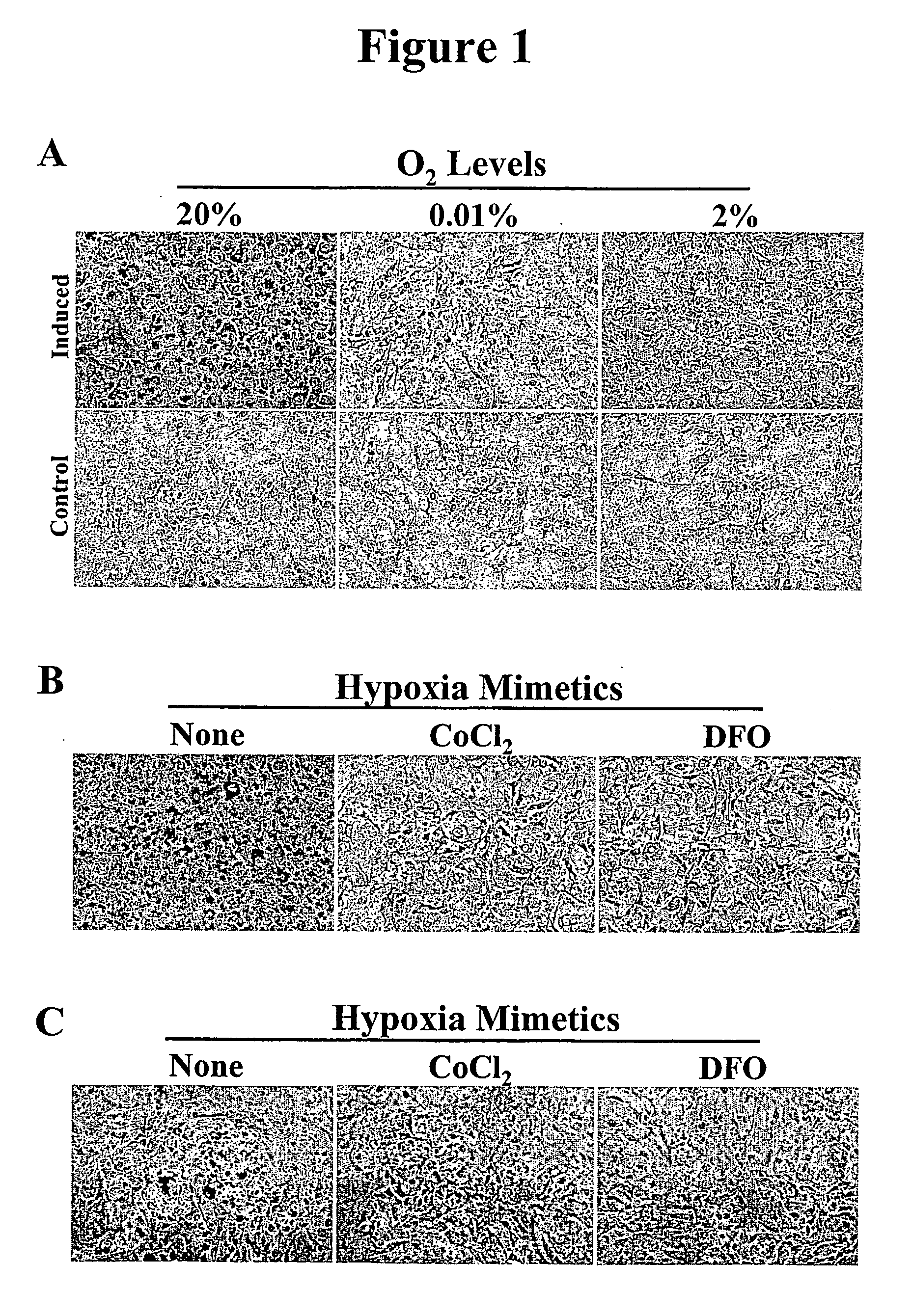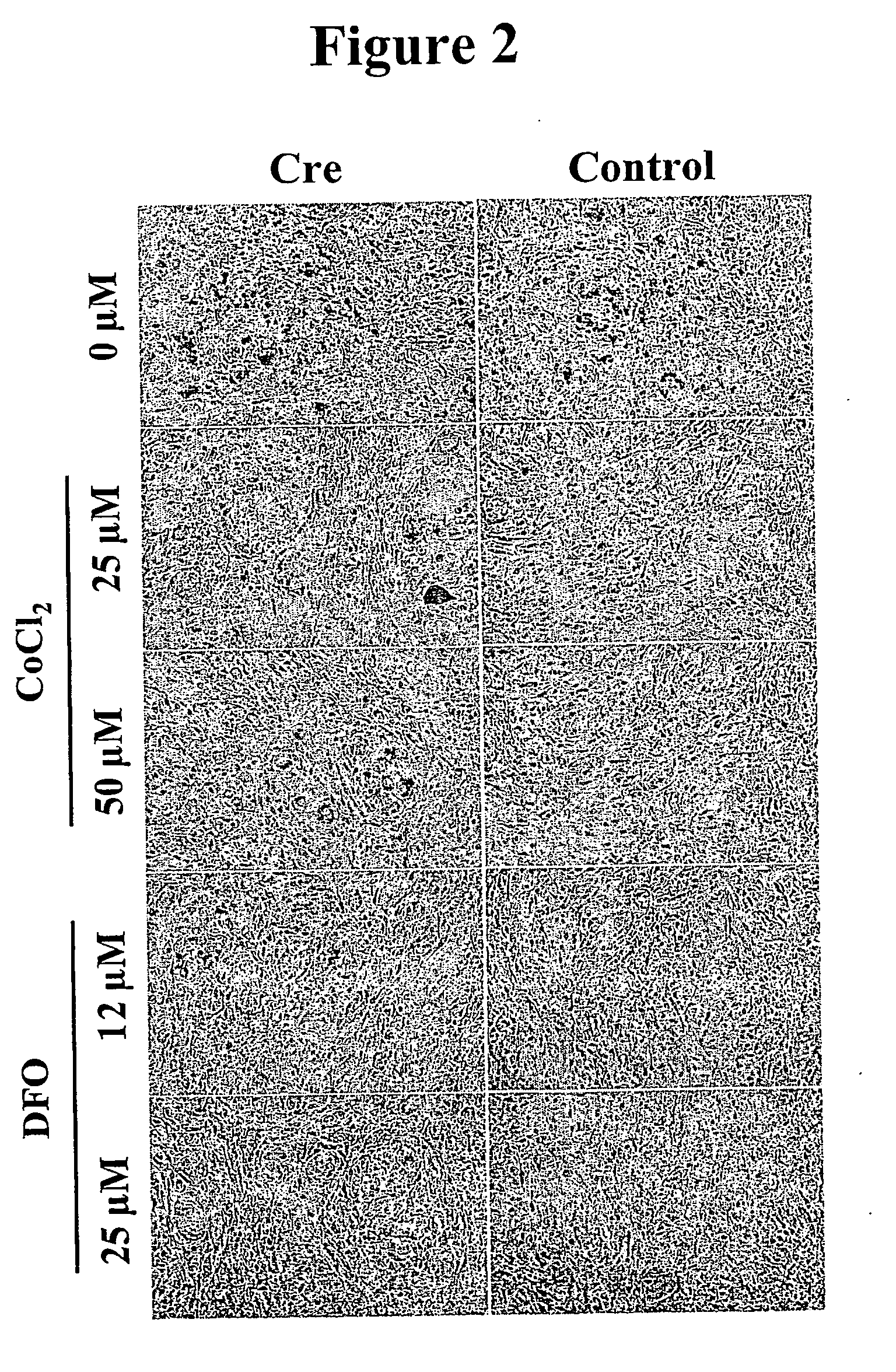Methods and compositions for regulating adipogenesis
a technology of adipogenesis and composition, applied in the field of methods and compositions for regulating adipogenesis, can solve the problems of weight loss, strenuous physical training, and inability to investigate the consequences of such transient hif-1 expression, and achieve the effect of reducing the vascularization of the placenta
- Summary
- Abstract
- Description
- Claims
- Application Information
AI Technical Summary
Benefits of technology
Problems solved by technology
Method used
Image
Examples
examples
[0059] The examples provided in the instant disclosure are intended to further illustrate the invention and, therefore, shall not be construed to limit the scope of the instant invention.
example i
Reagents
[0060] Cobalt Chloride (CoCl2), deferoxamine mesylate (DFO), Oil Red O, insulin (INS), dexamethasone (DEX), and 3-isobutyl-1-methylxanthine (MIX) were purchased from Sigma (St. Louis, Mo.). Stock solution of rosiglitazone was prepared in dimethylsulfoxide (DMSO) from the Avandia™ tablets (GlaxoSmithKline Pharmaceuticals).
example ii
Plasmids
[0061] The following constructs were made by PCR amplification of cDNA fragments using pGEM-DEC1 (T. Kawamoto, Hiroshima University, Japan) as template and in-frame cloning at the EcoRI into pcDNA3.1His or pLXSN: pLXSN-DEC1, pLXSN-DEC1 aa1-141 (N1), pcDNA3.1-DEC1, pcDNA3.1-DEC1 aa1-141 (N1), pcDNA3.1-DEC1 aa1-203 (N2), pcDNA3.1-DEC1 aa121-412 (C1), and pcDNA3.1-DEC1 aa201-412 (C2). The TAT-N1 was constructed by PCR amplification of DEC1 aa1-141 and cloned in frame at the EcoRI into pTAT-HA (S. F. Dowdy, Washington University, St. Louis, Mo.). The pLXSN / HA-DEC1 was made as follows. Full-length DEC1 was PCR-amplified with 5′ NheI and 3′ XbaI, and was cloned into pAS1 at the NheI in frame to the HA tag. The pAS1-DEC1 was cut with NdeI, filled-in by Klenow, and then cut with EcoRI to release the HA-tagged DEC1. Finally, the HA-tagged DEC1 was ligated into the pLXSN prepared by XhoI digest, Klenow fill-in, and then EcoRI digest. The following PPARγ2 promoter constructs were made...
PUM
| Property | Measurement | Unit |
|---|---|---|
| basic helix loop helix | aaaaa | aaaaa |
| energy | aaaaa | aaaaa |
| weight loss | aaaaa | aaaaa |
Abstract
Description
Claims
Application Information
 Login to View More
Login to View More - R&D
- Intellectual Property
- Life Sciences
- Materials
- Tech Scout
- Unparalleled Data Quality
- Higher Quality Content
- 60% Fewer Hallucinations
Browse by: Latest US Patents, China's latest patents, Technical Efficacy Thesaurus, Application Domain, Technology Topic, Popular Technical Reports.
© 2025 PatSnap. All rights reserved.Legal|Privacy policy|Modern Slavery Act Transparency Statement|Sitemap|About US| Contact US: help@patsnap.com



